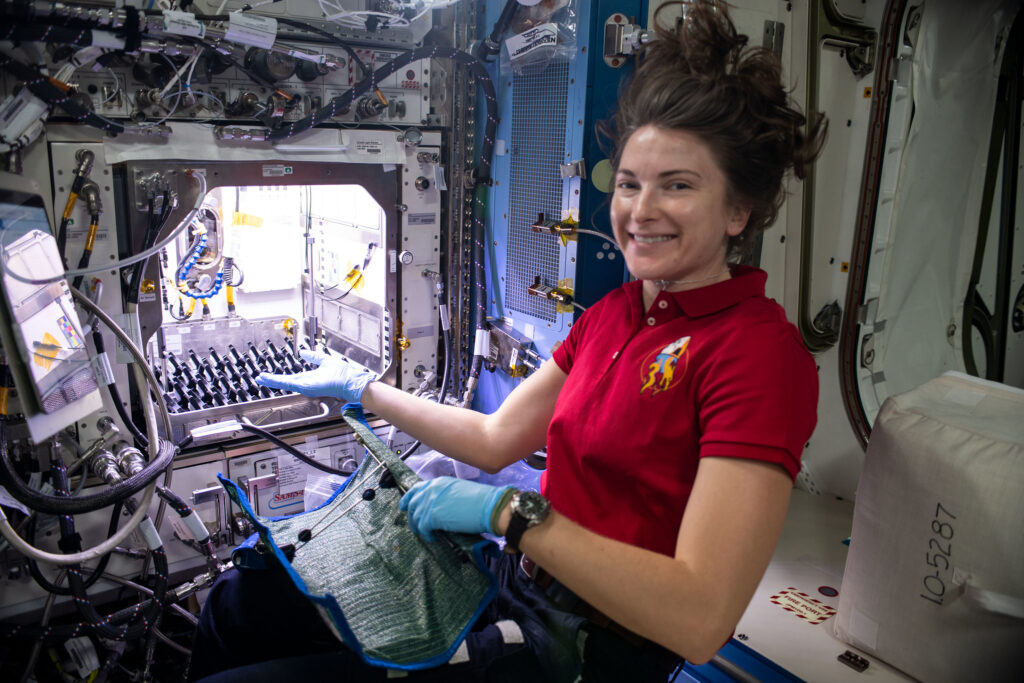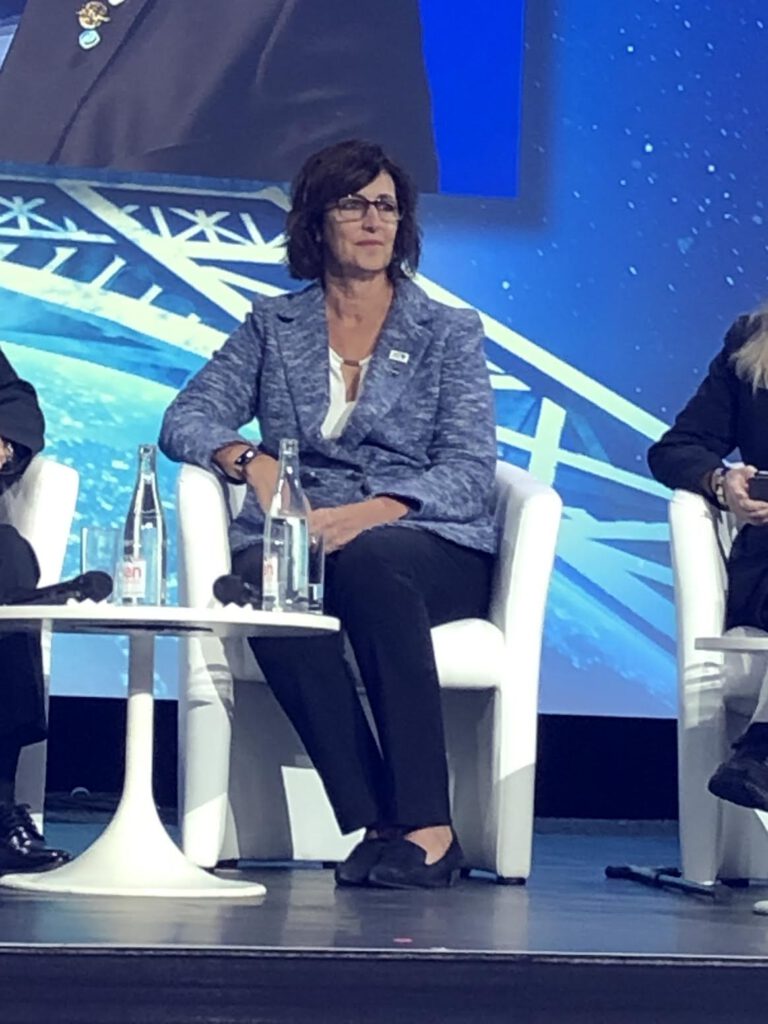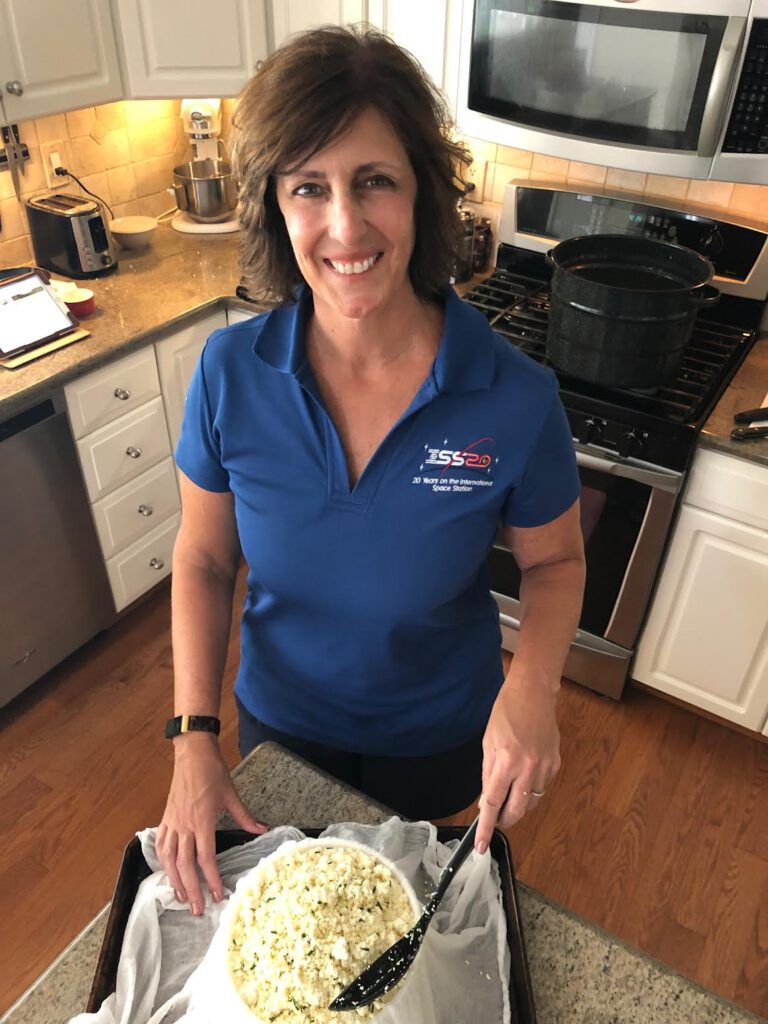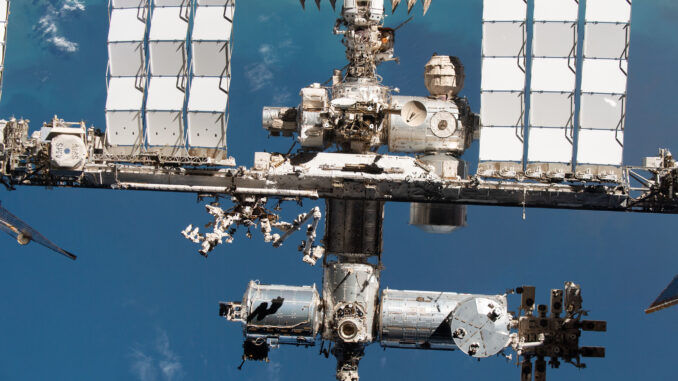
FROM ASHBURN TO THE SPACE STATION
By Chris Wadsworth
Robyn Gatens just can’t turn off the science. In her free time, she’s fiddling around with an old wine fridge at her home in Ashburn’s Farmwell Hunt neighborhood. She’s trying to find the perfect balance of temperature and humidity to help ripen her homemade cheeses — wheels of feta, cheddar and camembert.
And then, when the workweek resumes, she heads into Washington and NASA’s headquarters. Because besides being an absolute cheesemonger, Gatens is also the director of the International Space Station.
“I never could have really planned this,” Gatens said of her position with the space agency. “If you try to map out your career, it usually doesn’t turn out that way. It zigs and zags.”
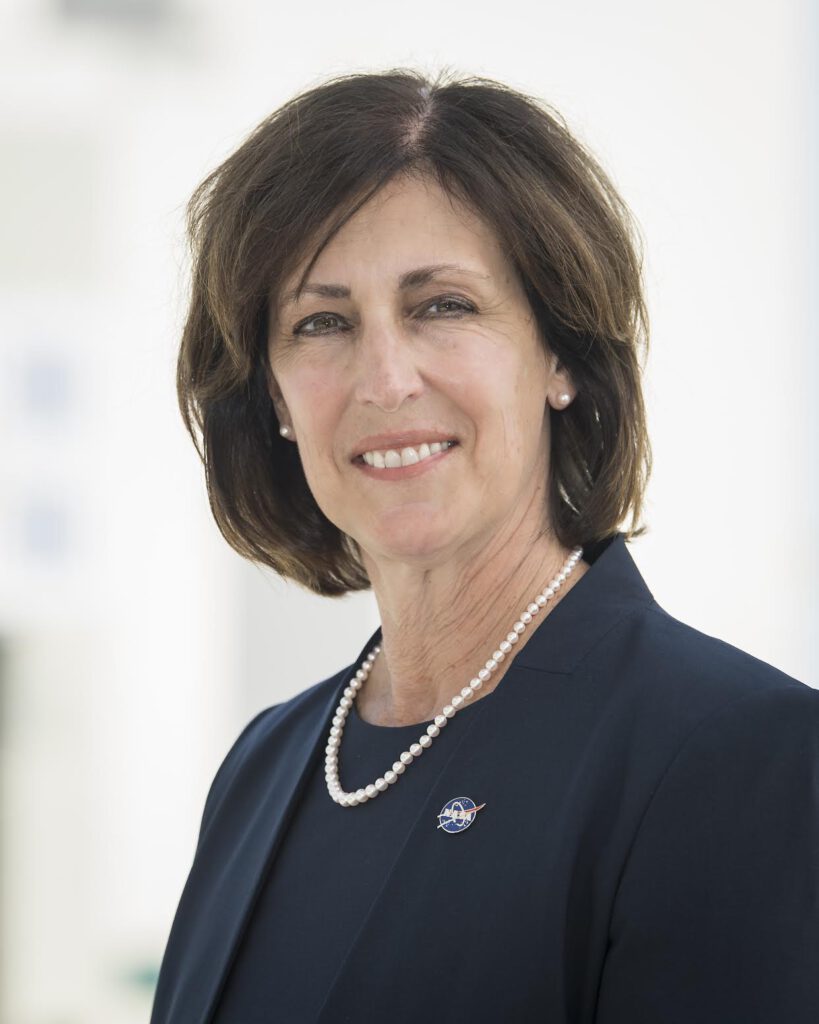
Gatens was born in Delaware and lived in Iowa and Texas before landing in the Atlanta area to finish high school and attend nearby Georgia Tech. She studied chemical engineering, which — through various twists and turns — led her to NASA. Up the ranks she rose until, two years ago, she was named the director for the ISS.
It’s been a fascinating journey — and space seems to fascinate almost everyone — so Ashburn Magazine interviewed Gatens to learn more about her job and her life. Here are excerpts from our conversation.
==========
Q: First off, what is the director of the International Space Station doing in Ashburn? Why aren’t you in Houston or Florida?
“NASA headquarters — which is my duty station — is in downtown Washington. Ten years ago, when I came up to do the headquarters role with the space station division, I relocated from Huntsville, Ala., to the D.C. area. Initially, I was just on a short-term detail, and we lived in an apartment, but then when the position became permanent, we started looking at buying a house. We liked Northern Virginia and … Ashburn was attractive to us. I knew the Metro was coming eventually – thank God it’s finally here – it makes my commute a whole lot better. We love the community. We love the neighborhood. We love the horse and wine country.”
Q: So, what do you do versus what the people at those other locations do?
“The space station program is run by a gentleman named Joel Montalbano. It operates out of Houston at the Johnson Space Center. He’s got a thousand people that manage and operate the day-to-day operation of the space station. That’s where Mission Control is. That’s where the astronauts are. The senior leadership is at NASA headquarters at a building downtown [in Washington]. I want to say we have a thousand employees representing all the mission directorates at headquarters. What we do at NASA headquarters is overall policy, overall strategy, for the program. We work with the White House and the administration and the Office of Management and Budget. We talk quite frequently with Congress.”
Q: Do you get to follow what’s happening on the ISS?
“We do have a small operations center at NASA headquarters, and we can listen as the space station operators talk to the crew. We have screens that we can watch what is going on. We particularly watch launches and EVAs. [Editor’s Note: EVA means “extravehicular activity” outside the space station such as space walks.] The reason we have this is so we can inform our stakeholders if something happens – then we communicate with the NASA administrator and the White House. [The control center] is the most interesting thing at NASA headquarters.”
Q: What type of things do you do in your role as director of the ISS?
“I’m responsible for the overall policy and strategy for the ISS and the overall budget. That’s the shortest way I can describe it. One of the initiatives that I was responsible for was to give briefings to the administration and the White House and Congress about why it would be a good idea to extend the ISS life to 2030. We had been authorized to go to 2024, but we needed – for lots of good reasons – to extend the life of the station to 2030, so in my role I put that story together. I did those briefings and ultimately gained support from the administration and Congress to extend the life of the space station.”
Q: What background or positions led you to this current position?
“I studied chemical engineering. I liked math and science in school. I actually liked chemistry – I was a little weird that way. When I came out of school, my first husband had interned with NASA’s Marshall Space Flight Center in Huntsville [and we were headed there]. There are no chemical plants in Huntsville, so I was trying to figure out what I was going to do, and long story short, I was fortunate enough to also be hired by the Marshall Space Flight Center.”
Q: You got involved with the space station right at the start of your career.
“It was 1985. The space station was in its early design stage, and the Marshall Space Flight Center had just gotten the responsibility for the life support systems. Life support systems are a bunch of chemical processes – recycling water, turning carbon dioxide back into oxygen. It was a great fit for a chemical engineer. So, I made that my technical specialty and … worked on the early design of the life support systems for the space station.”
Q: I’m sure everyone loves the astronauts. Do you have direct interaction with them?
“I do. Even though I don’t talk to the crew while they are on station like mission control does, we have a lot of astronauts who are either getting ready for their mission or have completed their mission who help us and have active roles in the space station mission. We have a lot of former astronauts who are in leadership positions.”
Q: In doing my research, I saw “Low-Earth Orbit Economy” mentioned as one of your responsibilities. What does that mean?
“Right now, we have a government-owned and -operated international space station. It’s not going to last forever – as much as we would like for it to. We got approval to extend to 2030. Our intent is not to leave low-earth orbit even though we are doing Artemis missions to the moon, and ultimately Mars and then the solar system. Right now, we are enabling other commercial companies to develop and build commercial space stations in low-earth orbit. And then NASA – instead of owning and operating the platform – will buy services from these commercial space stations.”
Q: Why is NASA going in this direction – letting commercial enterprises take the lead?
“The reason NASA is moving in this direction is that we like to do the next hard thing that the commercial industry might not be ready to do. We’ll do it and bring industry along with us. There are commercial companies that have learned how to operate space stations alongside us and now that they are ready, we turn it over to them, and then – as the government – we go and do the next hard thing, which is Artemis.”
Q: And Artemis is going to take us back to the moon.
“It’s named after the sister of Apollo. We say we are going to land the first woman and the first person of color on the moon.”
Q: What are the biggest issues or challenges facing the ISS that you’re dealing with right now?
“It is a very busy place. We have seven crew living aboard the ISS at any one time. We have cargo missions coming and going and all kinds of activities. The biggest challenge is actually a good problem – our demand is exceeding our capacity. We have more users and more projects that want to fly to the space station than we have vehicles and space to accommodate. Our house is getting full.”
Q: Would you like to go into space yourself or visit the ISS? Maybe as a space tourist?
“I mean sure – who wouldn’t? But would they send me? Probably not. I’m quite happy staying here on earth and enabling other people to fly, but sure, I would love to go if I had the opportunity.”
Q: When you’re not dealing with the ISS, what do you and your husband like to do here in Ashburn?
“My life with NASA is very scheduled as you can imagine, so I just love the quiet and the unscheduled time at home. We like to visit wineries – Fabbioli Cellars up in Leesburg is one we are members of. We also have a boat. We keep it down on the Washington channel, and the boat is great because I can spend some time on it and then walk to work.”
Q: And you picked up an interesting hobby during COVID.
“I started making cheese. I guess it was the chemical engineer in me. Having that kind of outlet is great. I joined a herd share over the holidays that allows me to get raw milk. Right now, I have a cheddar and a French Tomme wheel in the ‘cave’ – it’s actually a converted old wine fridge. I’ve made camembert. I’ve made feta. I’ve tried different stuff. The real trick is the aging. Once you’ve made the cheese, you have to age it and it’s tricky. It wants to be at 55 degrees, but at 85% humidity. It’s hard to mimic those conditions.”
Q: What might be next for you? What does someone do after being the director of the ISS?
“I’m always looking for opportunities to give back to the next generation. I’ve really enjoyed the past couple of years – more students have reached out from my alma mater. I have spent some time on campus talking with students and engaging with faculty. I’m going to be going to Virginia Tech and spending a day there. I’m mentoring a group of young women from Purdue University. I love human spaceflight, so anything I can do in my current role or any future role that can contribute to human spaceflight is what I want to do.”

